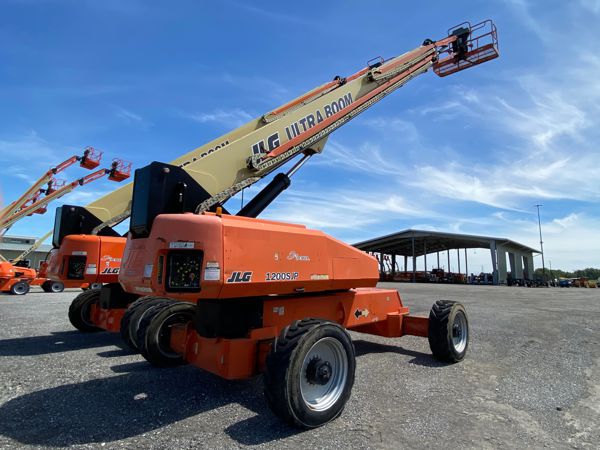Aerial lifts are essential tools used to access elevated areas, making them a popular choice on construction sites and other work environments. These versatile machines come in various types, including boom lifts, articulating boom lifts, scissor lifts, and telescopic boom lifts, each designed for specific tasks and conditions.
In recent years, the use of aerial lifts has increased significantly compared to traditional methods like scaffolding and ladders. This shift is due to the enhanced mobility, flexibility, and efficiency that aerial lifts provide, especially when working in hard-to-reach or complex spaces.
Among the leading manufacturers in the industry, JLG and Terex’s Genie are widely recognized for their reliable and high-performance aerial lift solutions. Their products are trusted by contractors around the world for both residential and commercial projects.
Like any heavy machinery, aerial lifts carry certain risks if not operated properly. Common hazards include falls from height, objects falling from the platform, tip-overs, ejection from the lift, structural failures, electrocution from power lines, and entanglement. That’s why proper training and adherence to safety standards are crucial.
The Occupational Safety and Health Administration (OSHA) has developed detailed guidelines to ensure the safe operation of aerial lifts on job sites. Following these regulations helps prevent accidents and protect workers.
Pre-Lift Inspection
Before every use, it's vital to conduct a thorough inspection of the aerial lift. This includes checking all vehicle components, lift systems, and the surrounding work area. Ensuring everything is in good working condition can prevent unexpected malfunctions and improve overall safety.
-
Vehicle components:
-
Check fluid levels (oil, hydraulic, fuel, coolant)
-
Look for leaks
-
Inspect wheels and tires
-
Ensure battery and charger are functioning
-
Test lower-level controls
-
Verify horn, gauges, lights, and backup alarms
-
Check steering and brakes
-
Lift components:
-
Confirm operating and emergency controls are functional
-
Check personal protective equipment (PPE)
-
Inspect hydraulic, air, pneumatic, fuel, and electrical systems
-
Examine fiberglass and insulating parts
-
Ensure all warnings and markings are visible
-
Check mechanical fasteners and locking pins
-
Inspect cables and wiring harnesses
-
Verify outriggers and stabilizers are intact
-
Look for missing or loose parts
-
Confirm guardrail systems are secure
-
Work zone inspections:
-
Identify drop-offs, holes, or unstable ground
-
Check for adequate ceiling height
-
Look for slopes, ditches, or bumps
-
Remove debris and floor obstructions
-
Be aware of overhead power lines and cables
-
Monitor weather conditions, especially wind and ice
-
Ensure no one is too close to the work area
Safety Practices When Operating An Aerial Lift
Fall Protection
-
Keep access gates closed at all times.
-
Always stand with both feet on the platform floor.
-
Avoid leaning over or climbing on guardrails.
-
Never use planks, ladders, or other devices as a work surface.
-
Use a body harness or restraining belt with a lanyard attached to the boom or bucket.
-
Do not tie off to external structures while in the bucket—this could lead to ejection during movement.
Operation/Traveling/Loading
-
Never exceed the load capacity—consider the combined weight of people, tools, and materials.
-
Do not use the aerial lift as a crane; it’s not designed for that purpose.
-
Avoid carrying items larger than the platform size.
-
Do not drive with the platform raised unless the manufacturer allows it.
-
Only operate lower-level controls if authorized by the worker in the lift (except in emergencies).
-
Stay within the machine’s vertical and horizontal reach limits.
-
Avoid using the lift in high winds beyond the manufacturer’s recommendations.
-
Never override safety mechanisms such as hydraulic, mechanical, or electrical systems.
Overhead Protection
-
Be mindful of overhead clearance and potential obstacles.
-
Avoid positioning the lift between overhead hazards if possible.
-
Assume all power lines and communication cables are live and maintain a minimum distance of 10 feet.
-
Request that power line workers de-energize any nearby lines before starting work.
Aerial Lift Stability
-
Extend outriggers on solid, level surfaces or use pads.
-
Engage the brakes when using outriggers.
-
Place wheel chocks on sloped surfaces when appropriate.
-
Set up warning signs and cones to alert others of the work area.
Group Discussion Topics
-
Is the aerial lift in good condition? Perform a daily visual check of tires, hydraulic lines, and signage.
-
Are there any overhead hazards like power lines or gas pipes near the work area?
-
What is the condition of the floor where the lift will be operated?
-
How many people will be on the platform? Does the total weight exceed the limit?
-
What factors might cause the lift to tip over?
Find Similar Articles By Topic
#construction
#material handling
#toolbox talks
#aerial lifts
#Terex
#JLG
Automatic Sealing Machine
Automatic Sealing Machine,Auto Sealing Machine,Automatic Cup Sealing Machine,Fully Automatic Cup Sealing Machine
Hangzhou Jingyi E-commerce Co.,Ltd , https://www.jypackmfg.com
